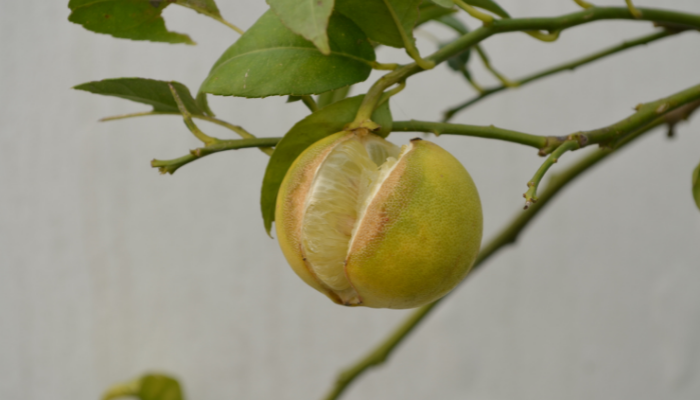Citrus problems in the home landscape

The content of this article 'Citrus problems in the home landscape' was prepared by Mongi Zekri and Robert E. Rouse of the University of Florida and has been revised and republished by FreshFruitPortal.com.
Citrus problems such as disorders, pest and disease damage, and nutritional deficiencies are numerous.
The landscaper and homeowner should recognize visual symptoms of most common problems so that they take the proper action to minimize their negative impact on fruit production and fruit quality of citrus trees in their care.
This publication is targeted to help the landscaper and homeowner identify some problems occurring on their citrus trees.
It should also help them understand the probable causes, precautions, and cultural practices needed to alleviate or solve those problems.
Disorders
Dead wood and twig dieback
Fruit drop
In some cases, a combination of factors rather than a single factor may cause fruit drop, making an absolute diagnosis and remedy difficult.
Whenever fruit is injured, the production of ethylene gas is triggered and the fruit may drop. In late summer to early fall, excessive fruit drop can occur on mature trees of early and mid-season cultivars planted in low-lying or poorly-drained areas due to epidemics of brown rot associated with extended wet periods and warm temperature.
Excessive fruit drop from maturity until harvest in some years can exceed 25% of the crop.
These losses seem to be more serious when hot rainy fall weather conditions prevail. Minimize water stress with a good water management program to reduce fruit losses.
In some cases, drop is more associated with the lower, shaded areas of the tree canopy. Fruit drop can be aggravated by low potassium levels in heavy crop load years.
Inadequate fruit set and severe fruit drop are major causes of low yield of navel orange.
Fruit drop after fruit set has been mainly attributed to problems associated with the small, secondary fruit that is embedded in the primary fruit of Navel oranges.
The June drop (usually 8-10 weeks after bloom) seems to result from competition between fruitlets and young leaves for carbohydrates, water, and other metabolites.
Sunburn
Fruit damage may occur on fruit exposed for a long period of time to direct sunlight, most often on thin-skinned varieties, especially those trees bearing fruit that extend beyond the leaf canopy.
The Murcott (Honey tangerine) is one of the most susceptible varieties to sunburn due to the tree growth habit. Sunburn causes the drying of the exposed portion of the peel, and the pulp and juice beneath it.
Fruit splitting
Splitting is more severe on some cultivars such as Valencia, Hamlin, Navel oranges, and Murcott. Grapefruit, Dancy tangerines, tangelos, and Temple fruit have a lower incidence of splitting.
Fruit splitting is primarily a problem at high temperature during periods of high humidity and rainfall from August through the fall.
The exact cause is unknown but is believed to be a problem of water relations and peel thickness. Damage often occurs when trees take up water from rain or irrigation after a long dry period and the fruit expands, bursting the peel in a crack across the bottom.
Splitting incidence varies seasonally and is usually greatest where cropload is heavy.
Splitting may result from water and/or nutritional stresses early in fruit development. Low to deficient potassium levels resulting in thin peel promotes fruit splitting.
Proper tree nutrition and a good water management program are the best defense against fruit splitting.
Premature fruit drying (granulation)
Navel, mandarins, mandarin hybrids, grapefruit and Valencia fruit sometimes exhibit drying of juice vesicles when harvest is delayed or when the trees are grown on lemon or other vigorous rootstocks.
The problem varies seasonally and is more of a problem on larger size or late bloom fruit.
Drying appears to be associated with over-maturity, a lack of water, excessive tree vigor, extended warm, and/or dry fall weather.
Premature fruit drying is also a problem associated with young trees, a condition that is alleviated with tree maturity.
Yellow vein chlorosis
Yellow vein chlorosis may be attributed to the girdling of individual branches, tree trunks, or roots due to a number of factors including water damage, Phytophthora foot rot, root rot, ant damage, or physical damage by equipment.
Yellow vein chlorosis may also occur on twigs and branches due to cool weather in the fall and winter due to lack of nitrogen uptake from the soil.
In leaves showing yellow vein chlorosis, the midribs and lateral veins and a narrow band of leaf tissue bordering them become yellow while the rest of the leaf remains green.




































